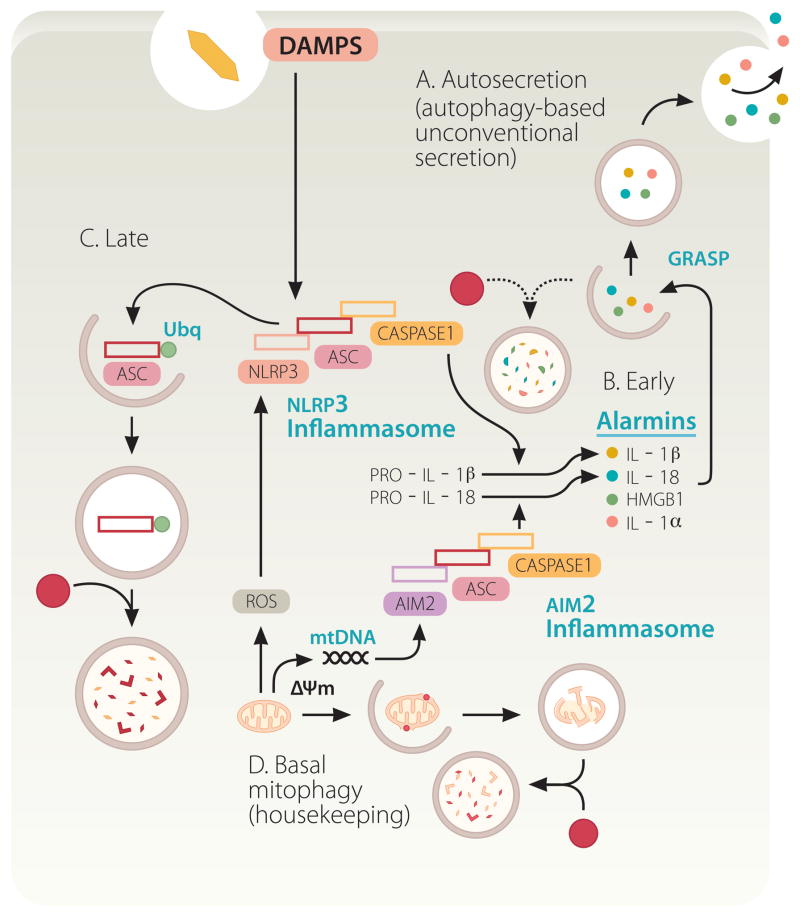Fig. 1.
Autophagy pathway: signaling systems and three proposed membrane sources in autophagosome formation. ER, endoplasmic reticulum. PM, plasma membrane. MT, mitochondria. Model 1: The central membranous structure, omegasome (Ω-some) is derived from the ER (ER cradle model), and is believed to be an early precursor of autophagic isolation membranes (IM) or phagophores. Phagophore crescents close to form double membrane autophagosomes that fuse with lysosomal intermediates to form the degradative organelles, autolysosomes. Model 2: Mitochondria may contribute membrane or phosphatidylinositol (PE) of relevance for LC3 (A, B and C; and other Atg8 paralogs, GABARAP and GATE-16) C-terminal lipidation into the LC3-II, autophagic membrane-associated form. Mitochondria may also be a source of reactive oxygen species that inactivate ATG4, an LC3 dilipidating enzyme. Mitochondria are also one of the major target substrates for autophagic elimination. Model 3: Plasma membrane Atg16L1-positive (initially LC3-negative) vesicles may contribute to autophagic membrane growth. Factors in the left upper corner represent upstream signaling systems (AMPK, mammalian Tor [mTor], Ral) controlling induction of autophagy in response to nutritional and cellular energetics signals. Beclin 1 (BEC-1) and class III phosphatidylinositol 3-kinase hVPS34 cooperate in control of phosphatidylinositol 3-phosphate (PI3P) structures that start with Ω-some, identifiable by the marker DFCP-1 for which a functional role in autophagy is yet to be established. NBR1 and p62 (also known as sequestosome 1) are autophagic adaptor proteins that capture cargo and interact with LC3; p62 is also present very early at the sites leading to omegasome formation, and is furthermore found in complexes with mTOR that sense amino acid starvation (not shown). Ambra and Atg14L are additional factors interacting with Beclin 1 complexes that are responsible for the early autophagosomal pathway. The lipid kinase hVPS34 interacts with UVRAG and additional factors (not shown) to control autophagosomal maturation into autolysosomes. Several systems and tethering systems along the different stages of the early secretory pathway and the Golgi apparatus (TRAPP, COG, GRASP) influence the formation, expansion (contributed by the only Atg integral membrane protein Atg9) and maturation of autophagosomal organelles.

